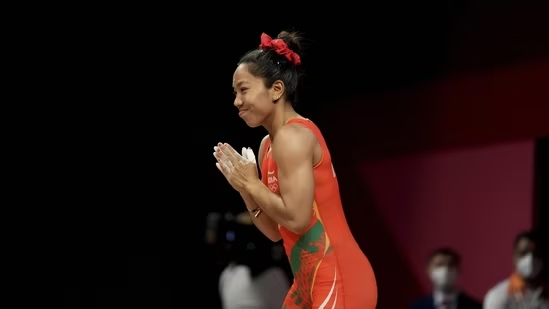We’re living through the beginning of a jump for gender equality in sport
A nonchalant silver from Mirabai Chanu that she suffered eight years for. A surprising—and yet not—bronze from PV Sindhu, because so few badminton greats have back-to-back Olympic medals. A surprising bronze from Lovlina Borgohain that paved roads—figurative and literal—to her future and past.

For the first week of the Olympics, Indians who live under rocks might have been forgiven for thinking these games are a women’s only event. Until the wrestlers and the hockey team and the stupendous Neeraj Chopra joined the party, six of India’s last eight Olympic medals had been won by women. Except no one who has been tracking Indian and global sport is surprised. What we are seeing is the occasional intersection of two changes: generational in our country—achingly, painfully, grindingly slow, but real—and global, societal within sport.
This second change usually moves just as slow as the first, and then suddenly jumps. And I believe we are living through the beginning of a jump for gender equality in sport. The Olympic Charter of 2010 was the first to include in its missions: “To encourage and support the promotion of women in sport at all levels and in all structures with a view to implementing the principle of equality of men and women.” Those words were called out by a Gender Equality Review Project commissioned after the 2016 Rio Olympics. 25 recommendations made by that project, now adopted, have shifted how future Olympics look and will be seen.
First, how they look: The Tokyo Games were the most gender balanced in history. Nearly 49% of the athletes are female. Every country has at least one male and female athlete for the first time ever. Mixed team events have doubled to 18, with marquee relays making their debut on the track and in the pool. Men’s weight categories in poor-ratio sports like wrestling and boxing have been pruned to create more women’s medals.
Then, how they will be seen: Reviews of previous Olympics revealed vast inequality in the scheduling during primetime broadcast slots. The middle and final weekends now have significantly more women’s medal events and competition hours. For instance, Rio featured 2 hours of women’s competitions on the highly followed last day, to 25 hours for the men. Tokyo featured 17 hours of women’s competitions on its last day, alongside 13 hours of men’s competitions. You can imagine the ripple effects on local coverage of female athletes, which in turn drives grass roots participation. Can’t see, can’t be.
More potent are the invisible effects of the Gender Equality Review Project. They include accountable guidelines for how funding is to be used by National Olympic Committees and international federations. “NOCs and IFs are encouraged to spend on gender balance initiatives in the current 2017-2020 Olympiad based on the Project’s Recommendations. These initiatives and spending allocations to be reported in the newly created IOC Gender Equality Tracking Report.”
While delivering the keynote address at the Sports Law and Policy Centre Symposium recently, journalist Sharda Ugra painted a picture of what this accountability looks like. In the year leading up to Tokyo 2020, India women’s hockey played an Olympic Qualifier, then toured Germany and Argentina, despite the challenges of the pandemic. For comparison, the Indian women’s cricket team played no international cricket for a full year after Covid. “We see these very focused pathways -at the very least around the top tier- of the women's game because they are mandated for international sports federations to run to be part of the international Olympic movement,” Ugra said. “As long as the Olympics have a great hold over the Indian imagination, our sporting governance, particularly when it comes to questions of female access and participation, are fortunately dictated by a more progressive world.”
The crusaders will fight at the grass roots for years, unrecognised. Players will rise from the ashes of dusty maidans to inspire. But these are trickles compared to the flood that can be top-down change. As I’ve argued in these pages before about women’s cricket, administrators hold a disproportionate sway in the lives of athletes and the destiny of a sport. Having a Gender Equality Tracking Sheet watching their steps makes me feel better. We live in times where the Olympics are questioned every day before and after they are actually played. But IOC’s efforts to redesign the Games, and force change in member countries, must be celebrated.
Disclaimer: The copyright of this article belongs to the original author. Reposting this article is solely for the purpose of information dissemination and does not constitute any investment advice. If there is any infringement, please contact us immediately. We will make corrections or deletions as necessary. Thank you.







